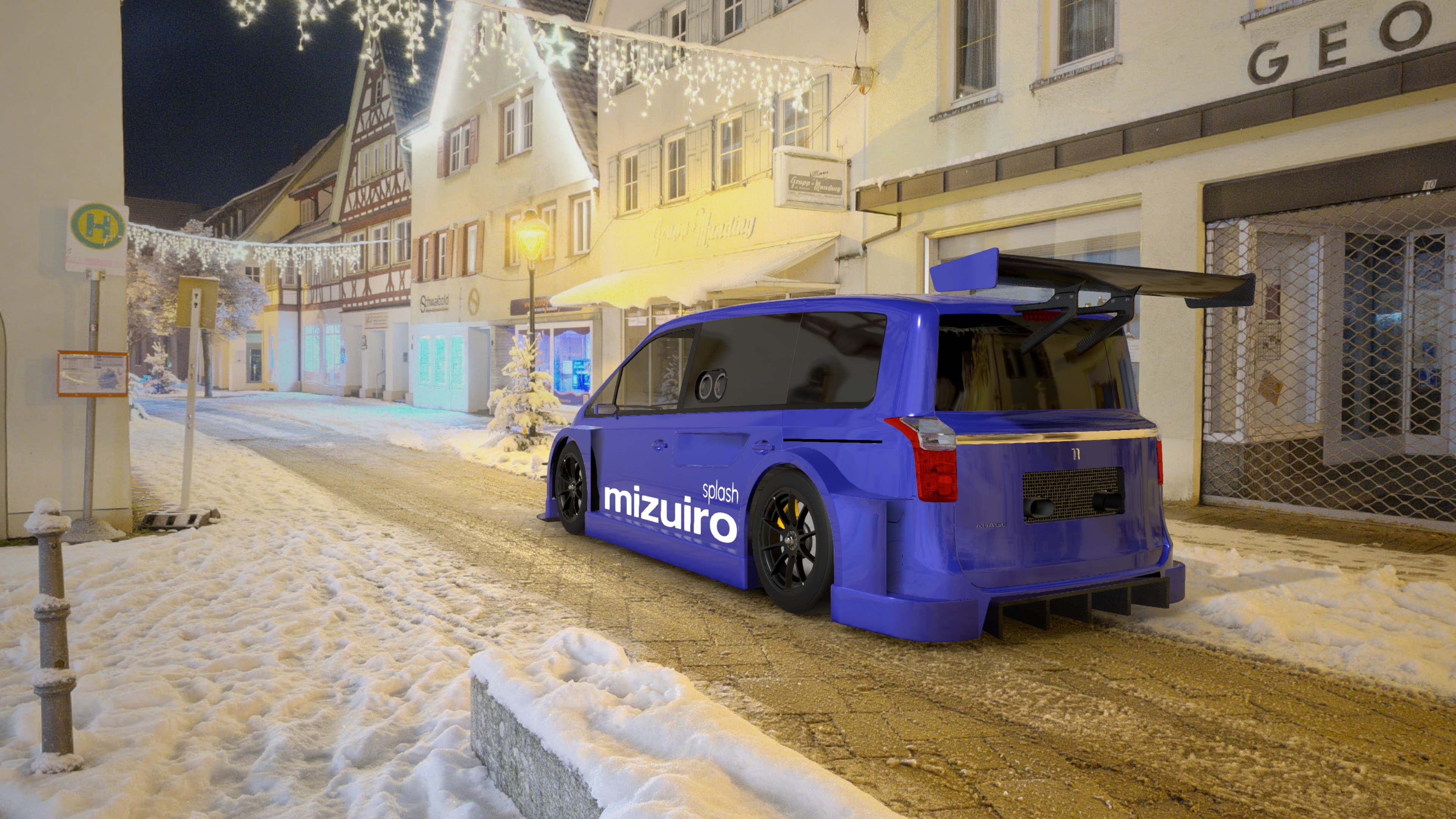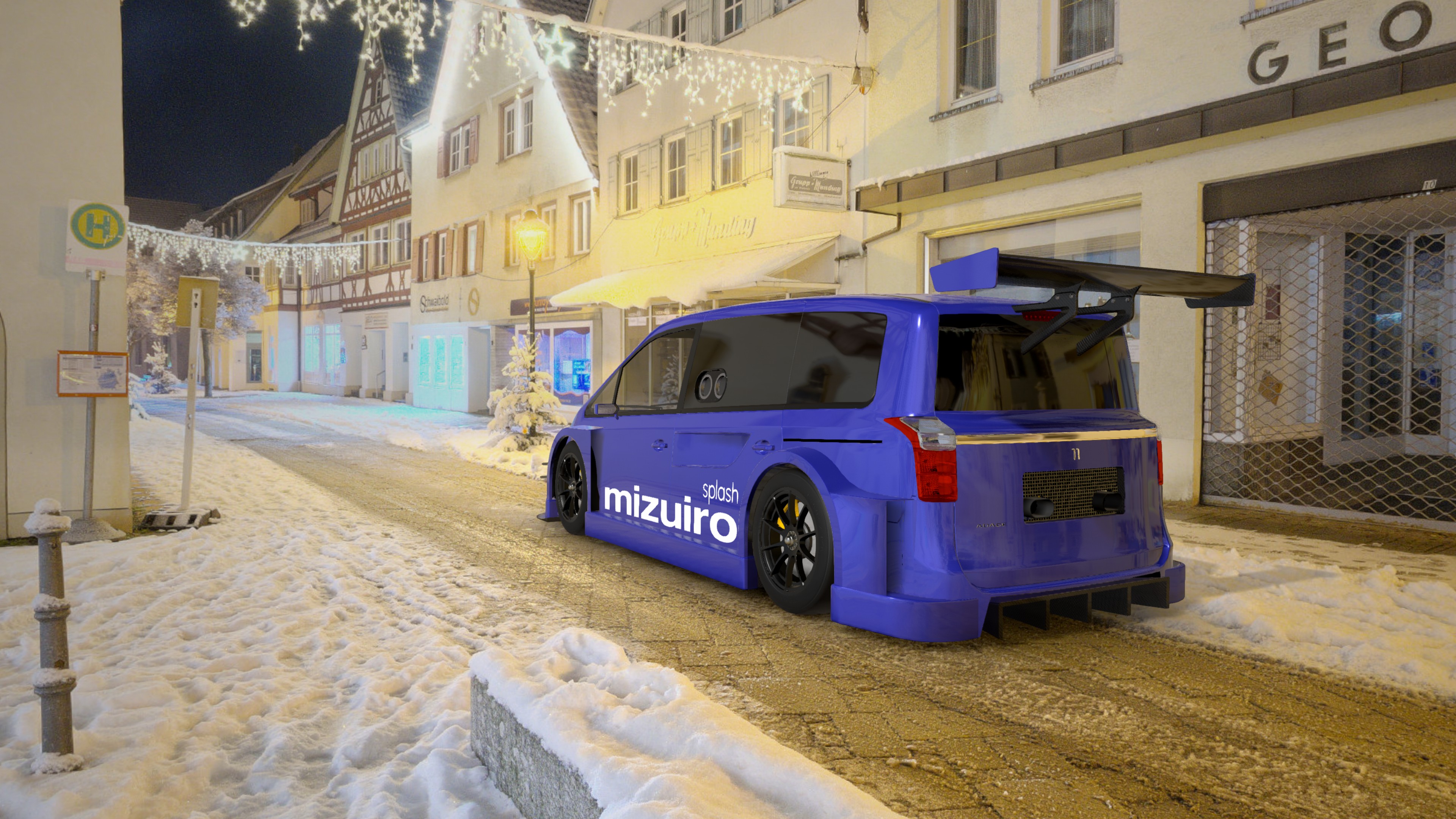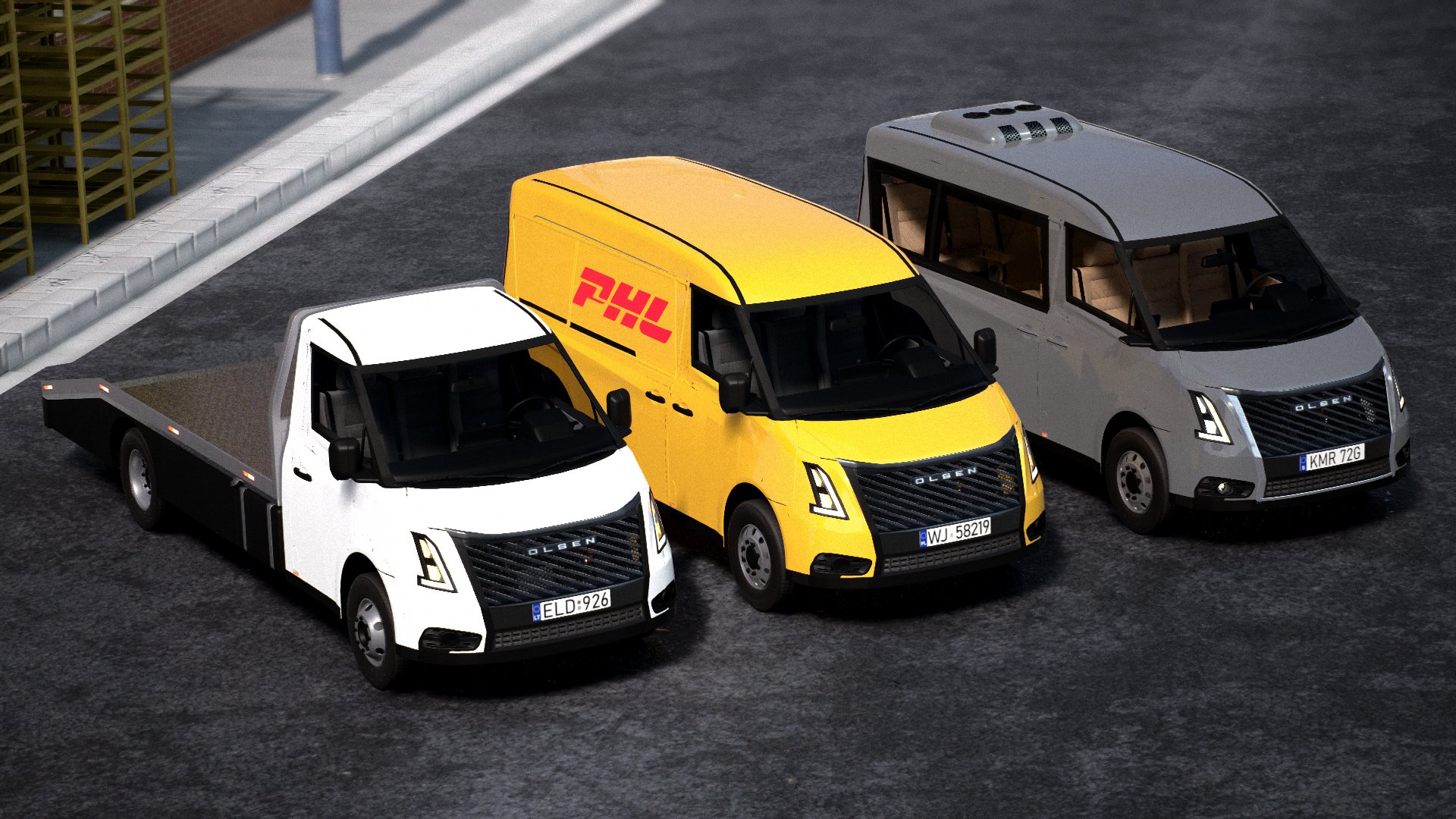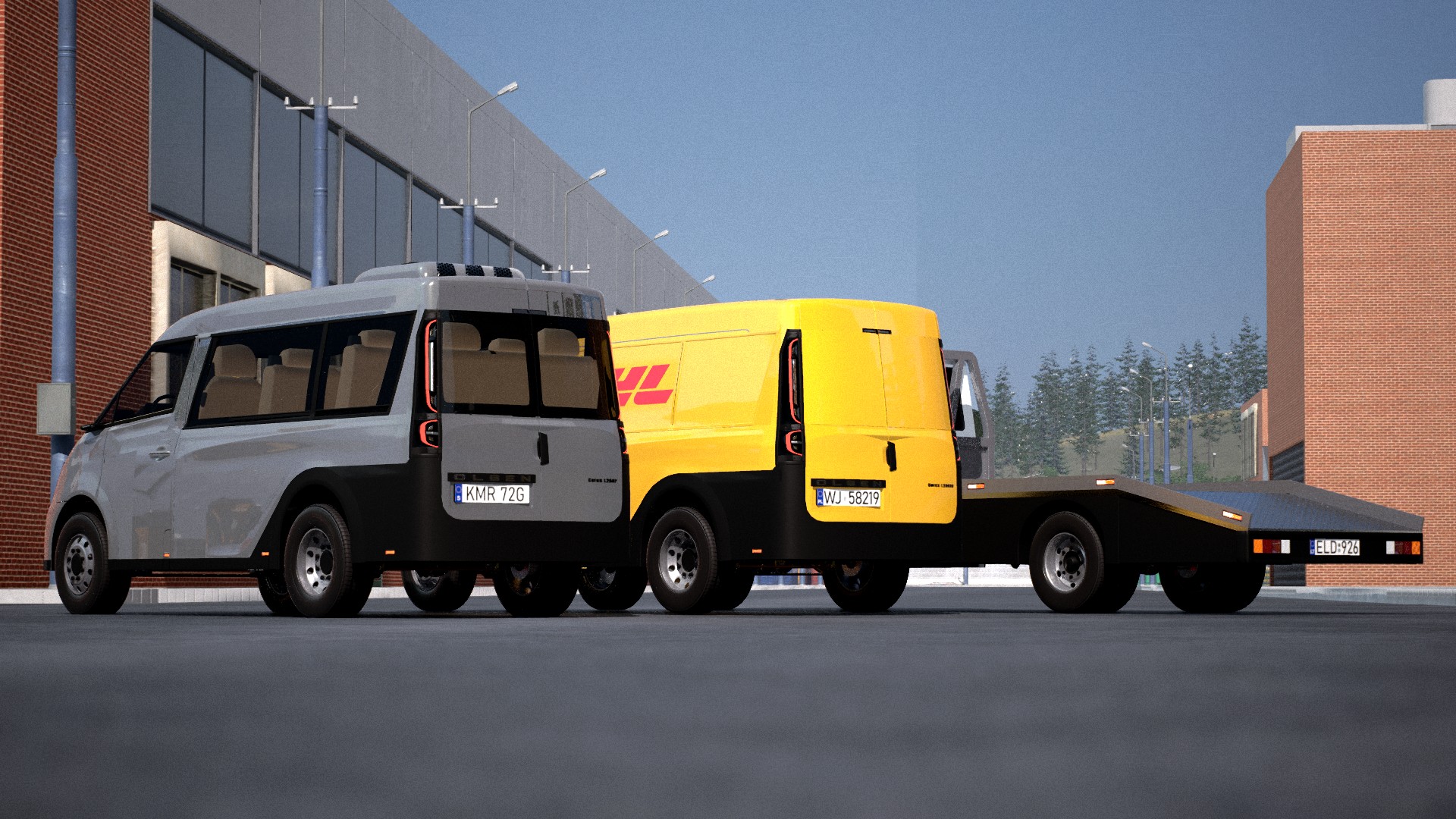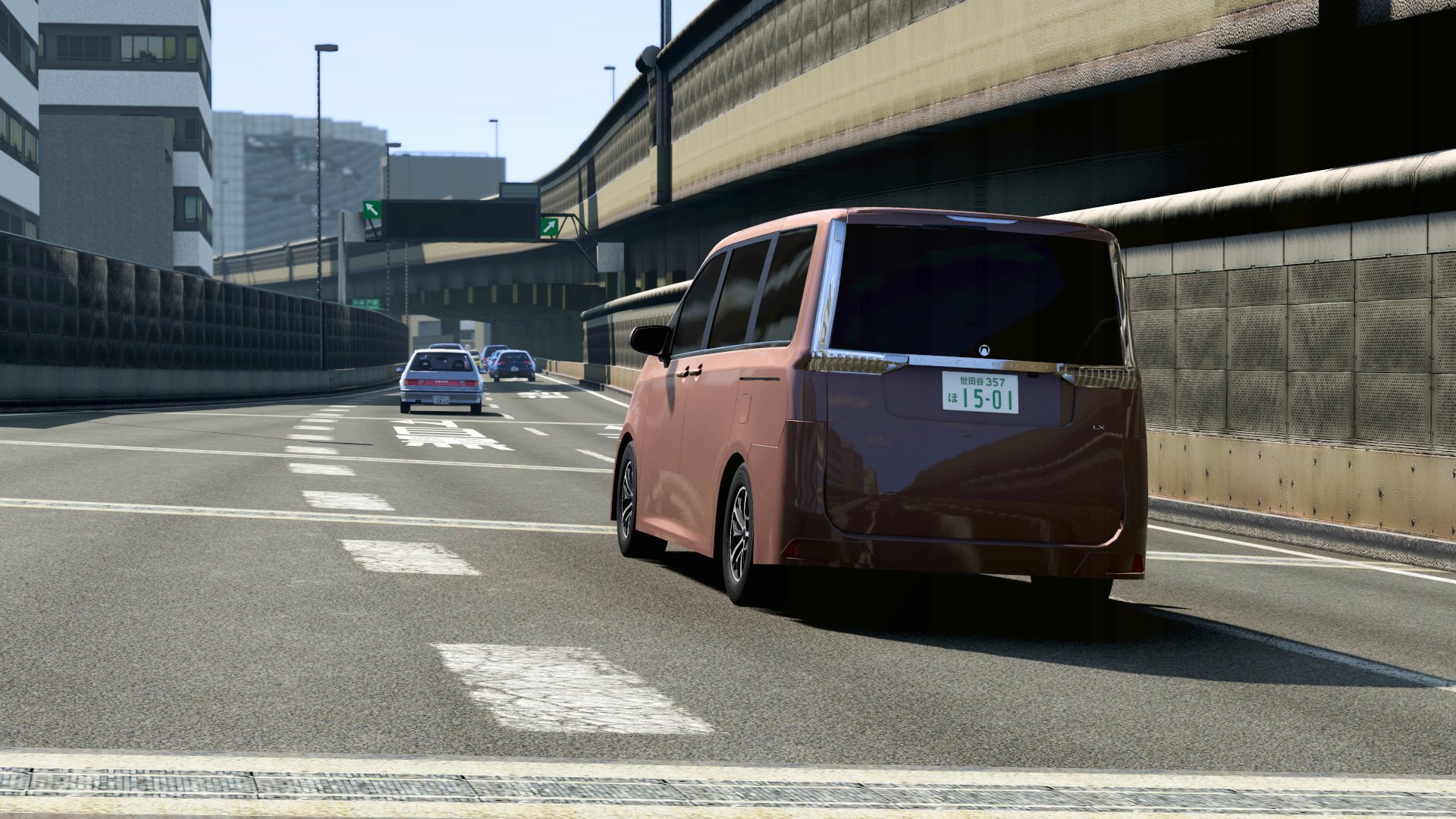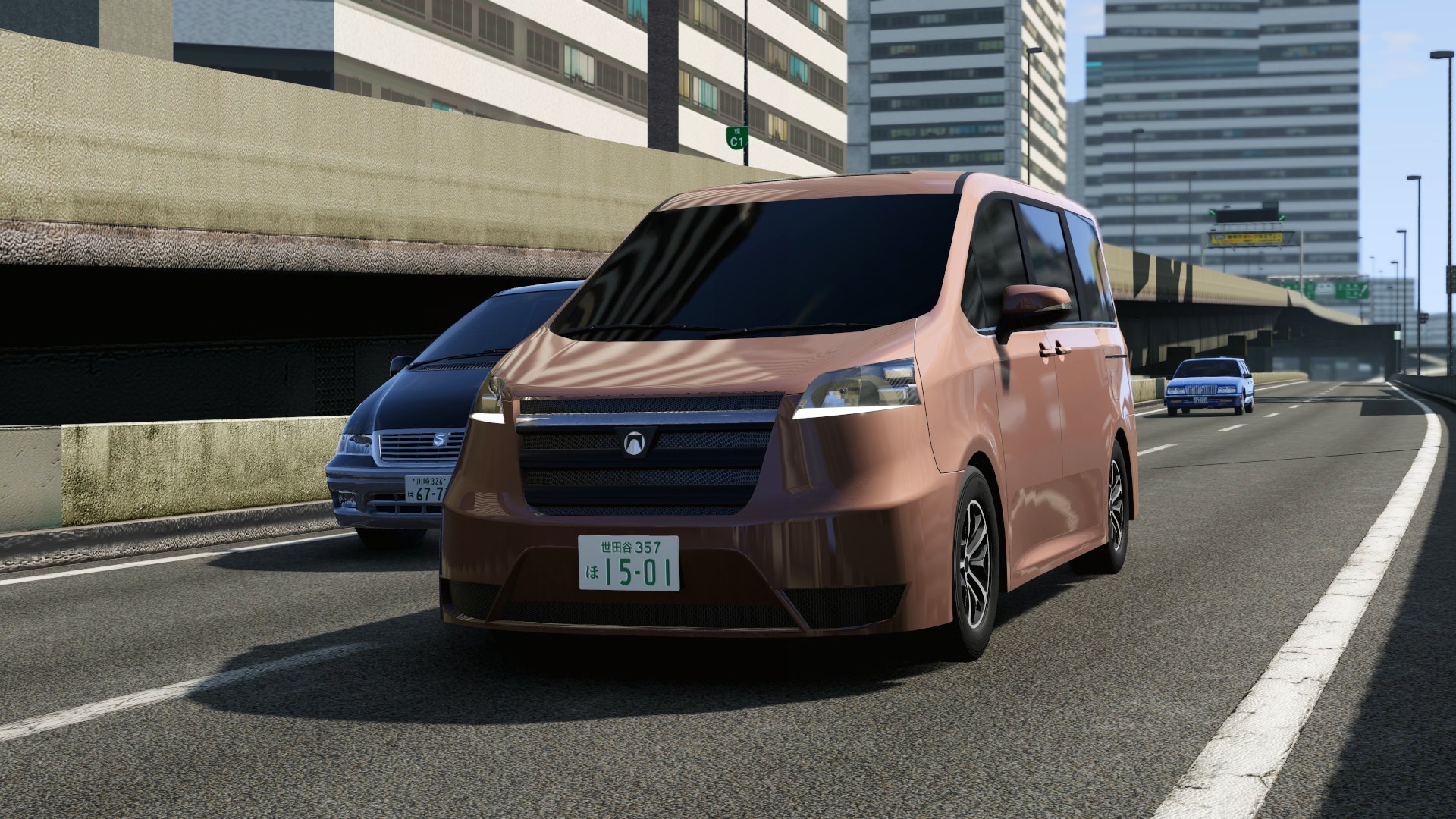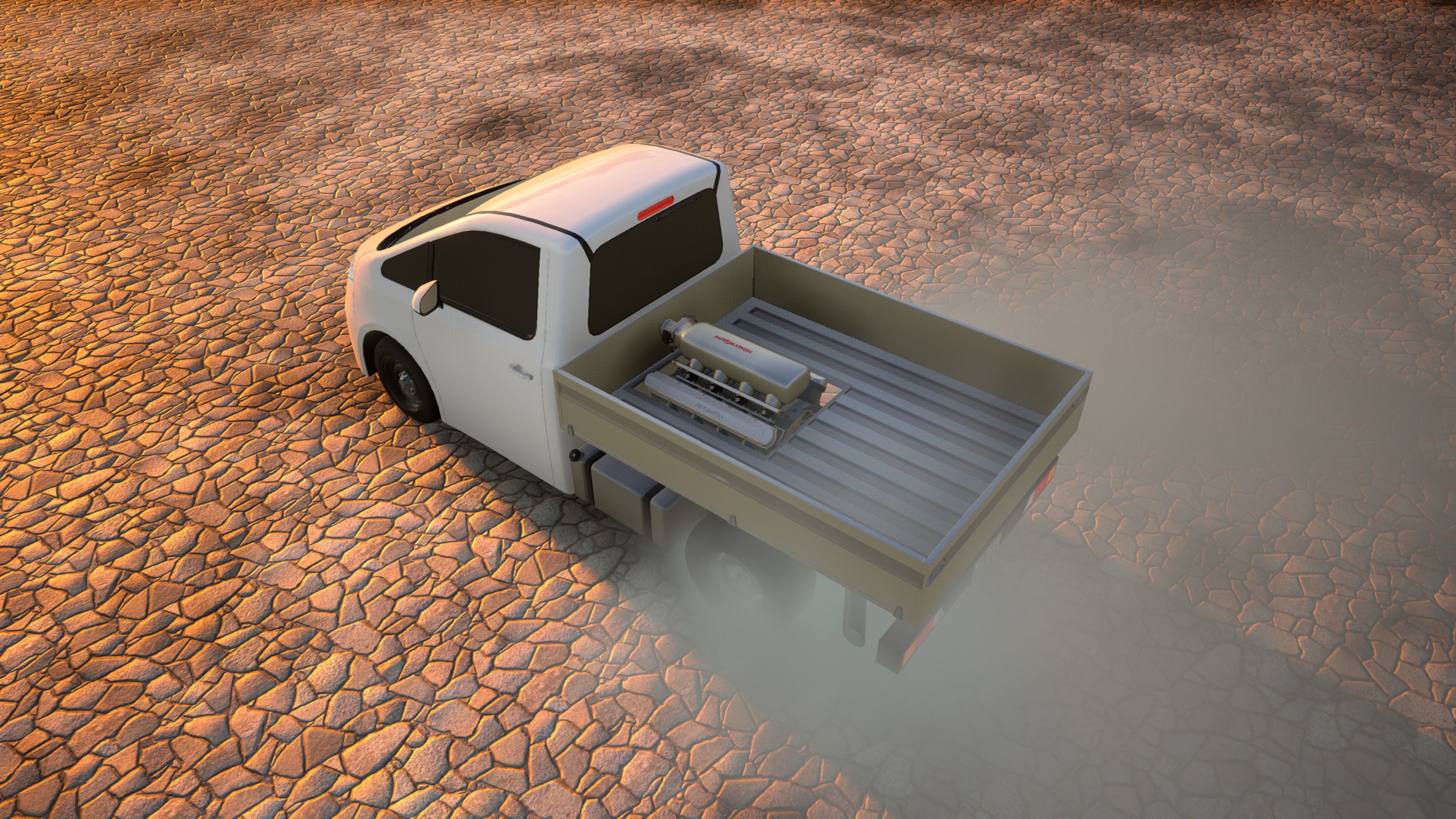Overview
My first official game art contract with Camshaft Software, the developers of Automation, was in the summer of 2023. At this point in time, although many of the decade-old vanilla car bodies were being remade to meet the game's current standards, there were still a few niches that had yet to be filled. One of these niches was a medium-sized (by non-North American standards) 2010s van body family with both cargo and passenger variants.
The vehicle I chose as a base for this body family was the second-generation Toyota Noah, a compact MPV positioned between the subcompact Sienta and the mid-sized Alphard. Inspiration was also drawn from its main competitors, the third-generation Nissan Serena and the third-generation Honda Stepwgn.
Despite the global position the body family is intended to fulfill, the Noah's distinctly Eastern air led to its in-game name, which references the camphor tree and the eponymous wax sourced from it.
Available in vanilla Automation
Steam Workshop link (mod variants)
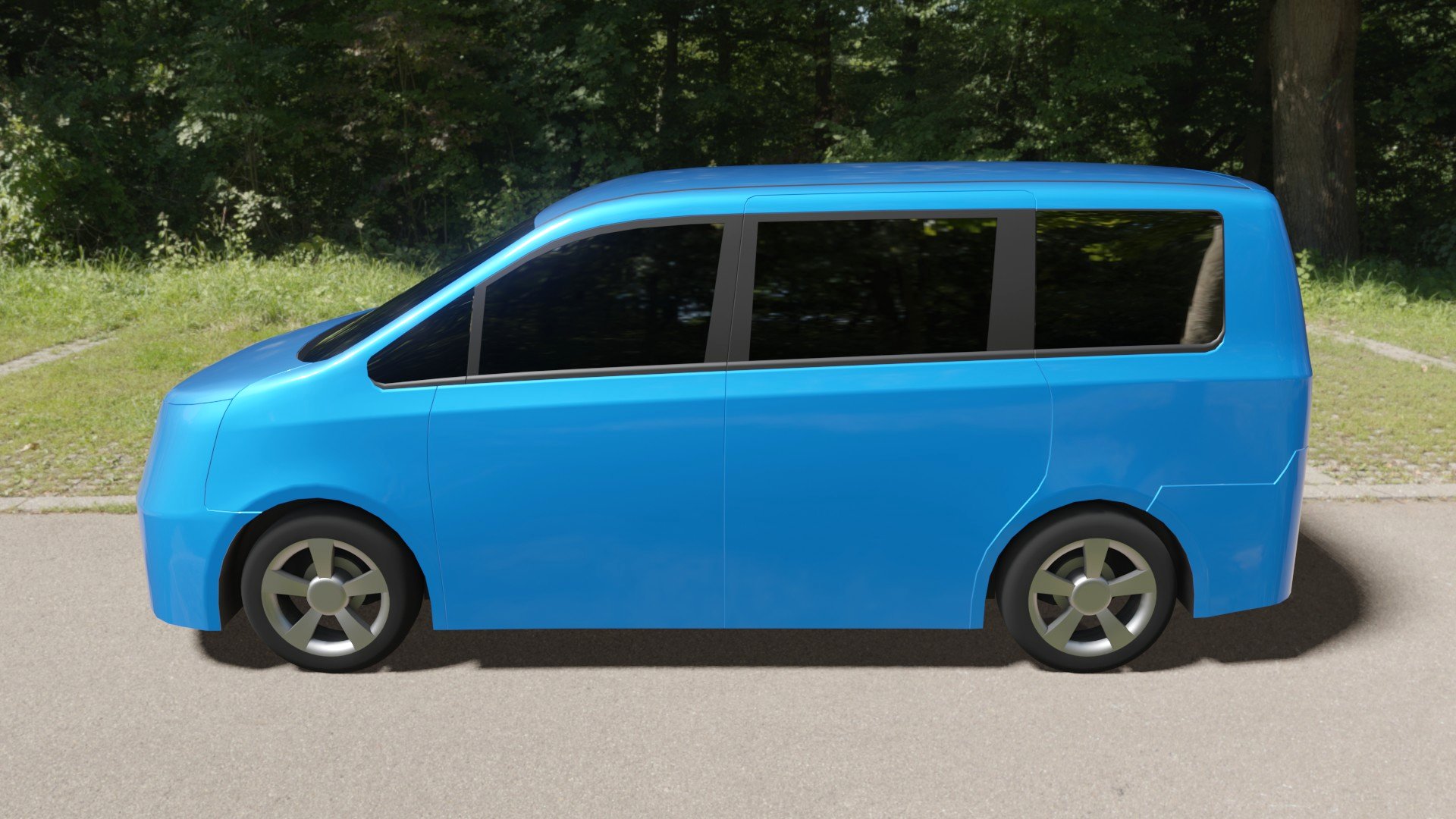
The base body shape is that of an unassuming people or cargo hauler


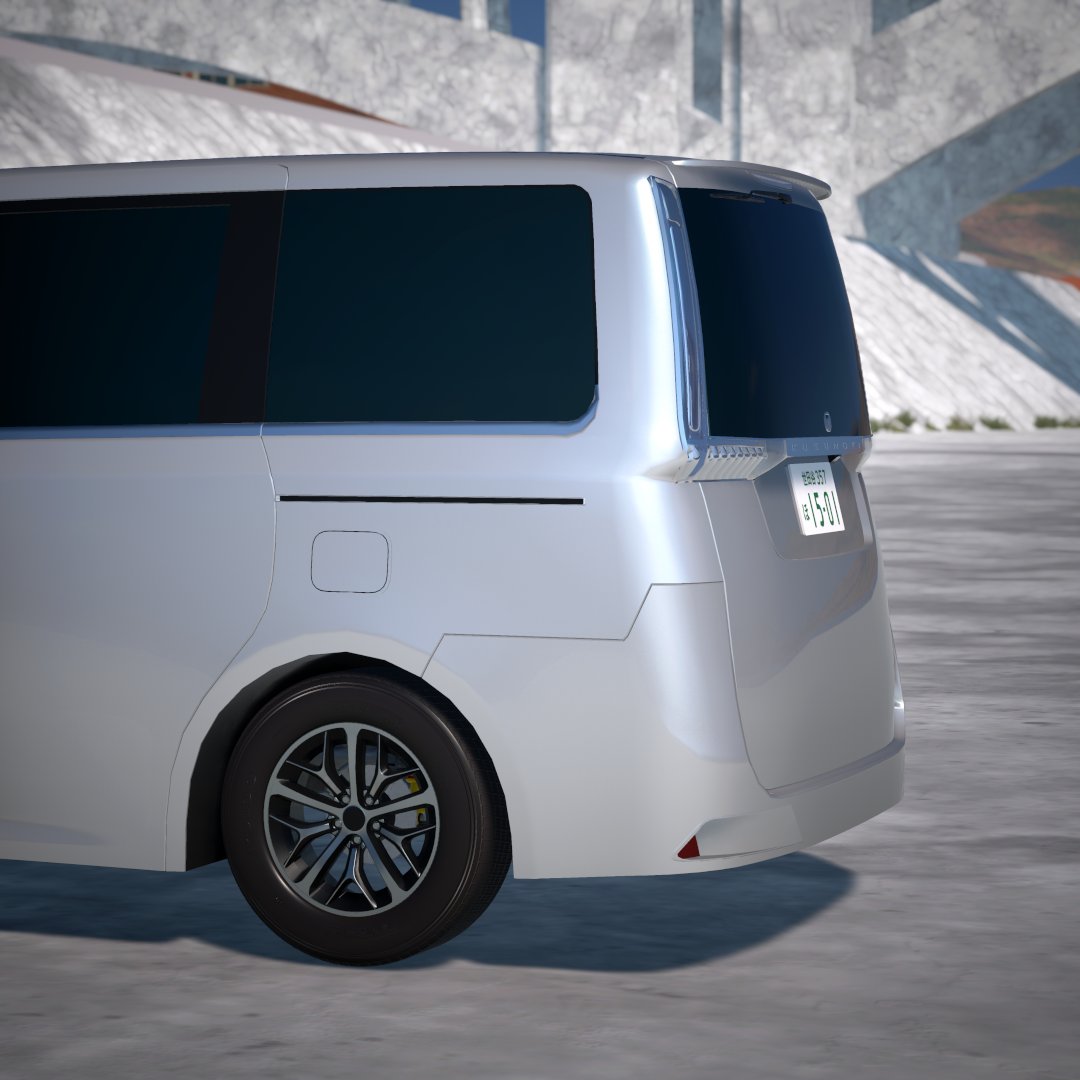
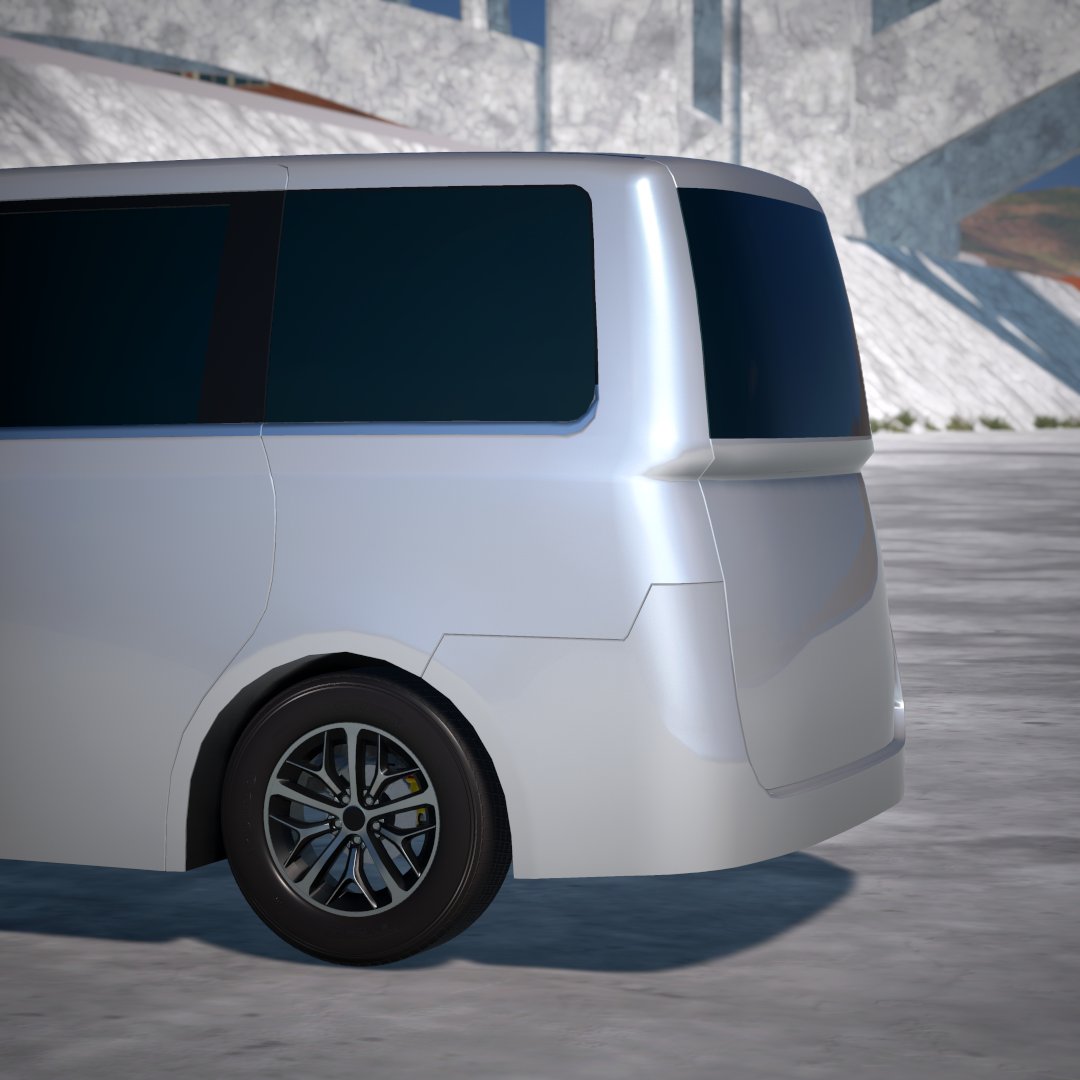
The interesting indent in the middle of the tailgate on the third-gen Toyota Noah and second-gen Nissan Roox, and a rough equivalent created on the Camphor with and without fixtures
Morphs
Joining the regular set of front, rear, widebody, and pillar adjustment morphs (see my previous Prototype II post), as well as more specialized beltline and roof height morphs, was a morph target to enlarge the wheel arches in the vein of the fifth-gen Mitsubishi Delica and other similarly rugged vans.
By combining certain morphs, the tailgate can be made to protrude inward just below the rear window—a deliberate design choice intended to approximate the rear fascias of cars like the facelifted third-gen Toyota Noah and the second-gen Nissan Roox. Moving one of these morphs the opposite way results in a stepped quasi-notchback shape, like on the Toyota JPN Taxi (and, to a lesser extent, the Renault Vel Satis).
'One-box' or 'monobox' MPV enthusiasts will be delighted to know that the hood and A-pillar can be easily configured to produce a one-box profile, and the centre of the bonnet can be morphed downwards to aid in forward visibility.
Truck Variants
In addition to the standard passenger and cargo van variants (both in 3-door and 5-door styles), three pickup truck variants were also included. One such pickup truck is of the "drop-side" flatbed variety (as seen on the majority of kei trucks, as well as larger flatbed-equipped vans like the Ford Transit and Renault Master).
As a result of the increased UV mapping complexity associated with a completely separate bed, bumper, and rear mudguards (plus the rear of the cab being out of reach of fixtures), the Camphor is only the third Automation body set to come with flatbed variants. Additional invisible 'lip placement' geometry on which fixtures can be placed (as usually used around the bottom of the body and over the wheel arches) is also instrumental in bridging the gap between the cab and the bed.
The other two pickup variants were done in the more typical unibody coupe utility or 'ute' manner, though the bed of the 2-door single-cab variant has a front wall and a seam visually separating it from the cab, to imply a more traditional body-on-frame setup if the need arises. The 4-door crew cab variant, meanwhile, leans more into the unibody truck aesthetic, with the C-pillars blending into the sides of the bed. If it looks familiar, that's because it was inspired by the funky Toyota bB Open Deck.

Left to right: cargo haulage, car go vroom
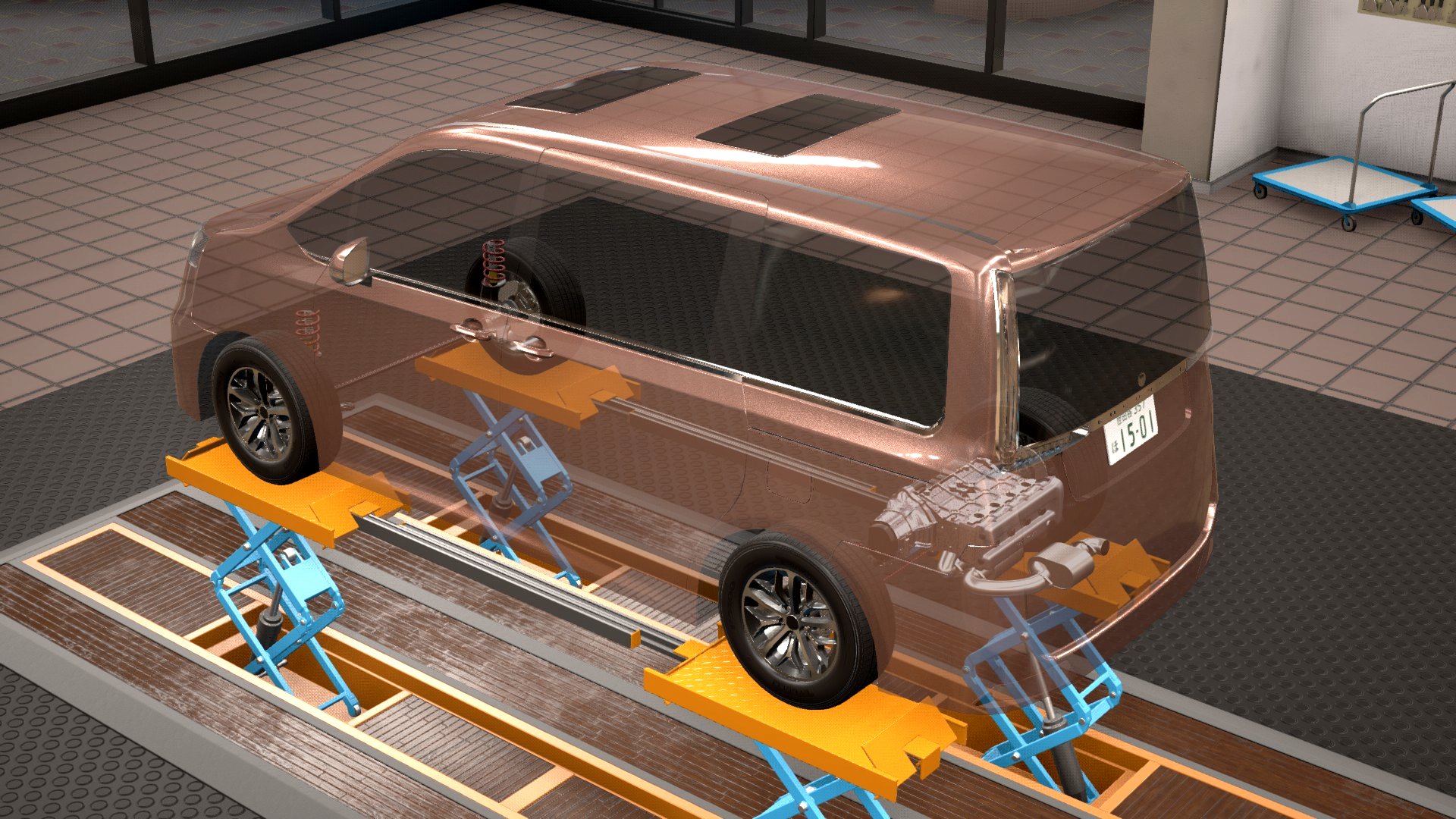
Putting the engine here could give you a trunk and a frunk, while also making it an engineer's dream and a mechanic's worst nightmare (Automation)
Engine Bays
The ongoing Automation body reworks have also brought with them renewed interest in (and thus availability of) rear-engine options, as players seek to replicate the eccentricity of cars like the Tatra 613, Suzuki Fronte, and the first three generations of the Volkswagen Transporter, or bring rear-engine designs into the 21st century (911 and Fortwo aside). However, I decided to take things a step further by introducing a mid-engine option to all variants of the Camphor.
Mid engine bays carry heavy performance connotations in Automation, but may be used on non-performance cars where a rear engine bay would be too small for any adequately sized engines (e.g. the Egg body family). This is because the game doesn't distinguish between a transverse mid engine and a transverse rear engine, leading to cases of a transverse rear engine being grouped under the transverse mid engine umbrella. With the Camphor, though, it's a little different.
Since the Camphor has both rear and mid engine options, the explanation for the mid engine option lies not in the lack of space for a rear engine, but rather in the flatbed truck body variant. Among kei trucks, the Honda Acty and Suzuki Every are notable for their mid-engine layout, as is the Acty-based Honda Z kei crossover. The idea of similar engineering principles being applied to larger vehicles was thus the main motivator for this decision.
Mod Variants
As per the aforementioned Honda Z, the vanilla Camphor's mid engine bay was restricted in size to preserve passenger space with multi-row seating, and mainly only fits engines transversely (with the exception of boxer engines). For players like myself waiting for a chance to put their own spin on the Renault Espace F1 or Ford Supervan, mod variants were created with the only change being a significantly elongated mid engine bay—much better suited for things like supercar-sourced longitudinal V12s.
Gallery
